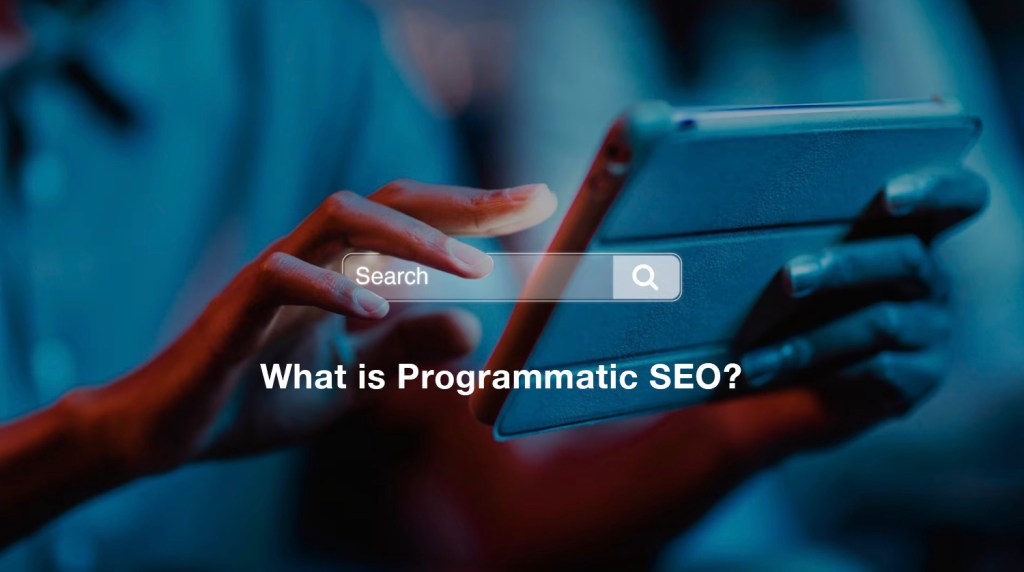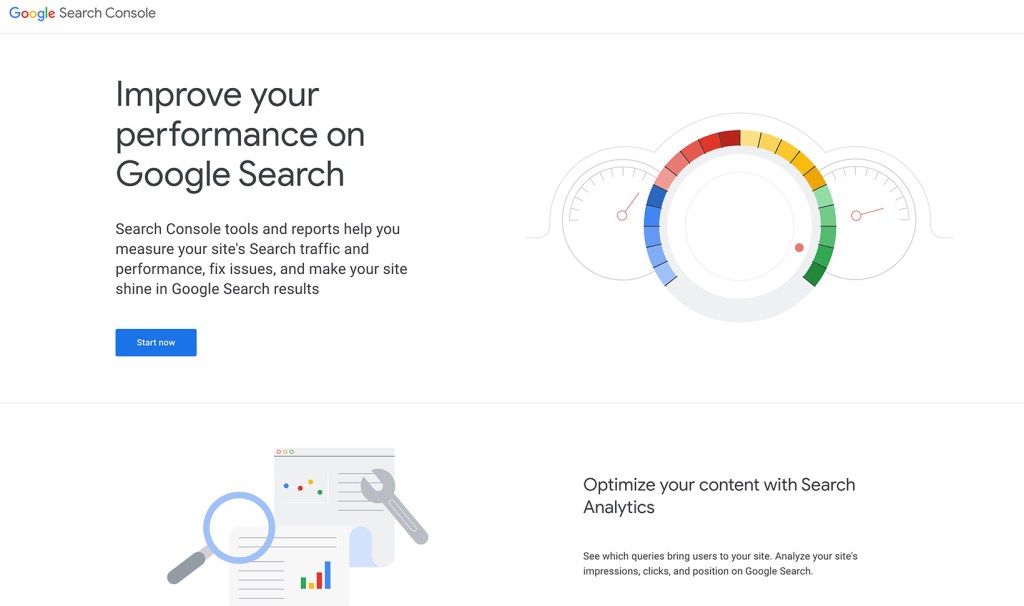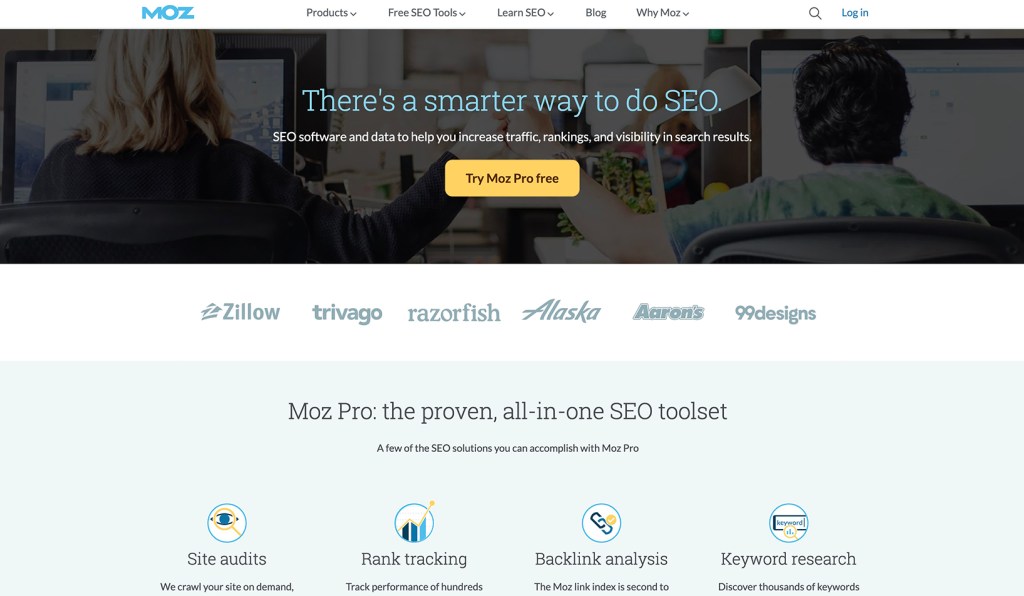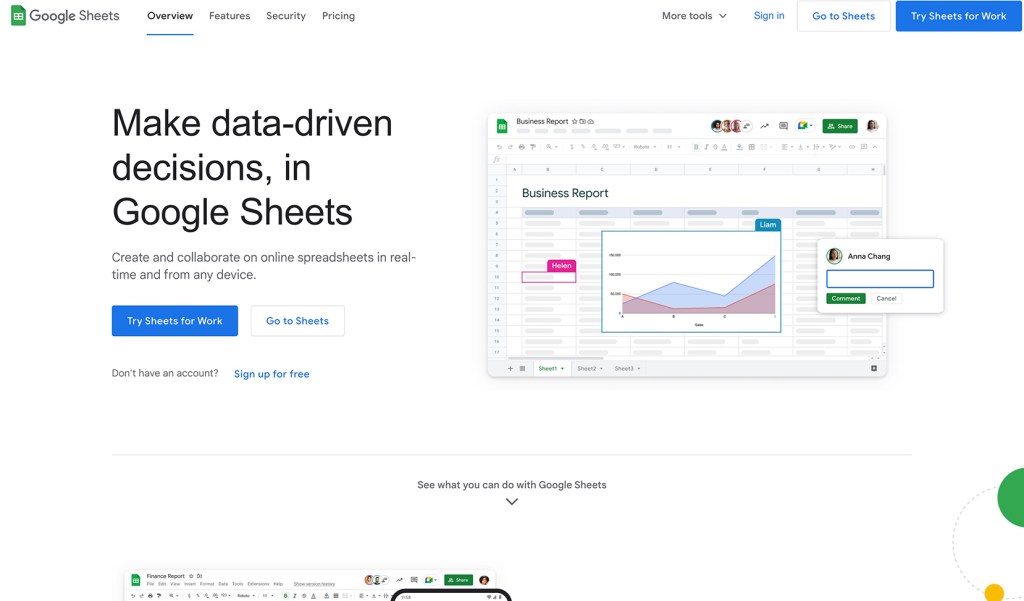Updated: Sep 19, 2023 By: Dessign Team

Programmatic SEO is a data-driven strategy that involves the automated creation and optimization of web pages on a large scale to improve a website’s search engine performance. By leveraging data and analytics, programmatic SEO enables businesses to target specific niche markets and reach their target audience more effectively. This strategy has gained popularity in recent years, due to its potential to generate massive amounts of relevant and high-quality content that can drive more traffic and increase revenue.
This approach to SEO involves using automated tools and algorithms to identify valuable keywords, develop targeted content, and enhance overall website performance. It allows businesses, like TripAdvisor and Yelp, to create numerous landing pages that cater to different search queries, making their content more accessible to potential customers. Programmatic SEO capitalizes on Google’s ranking criteria of relevance, quality, and usability, ultimately delivering user-friendly content that appeals to both search engines and users alike.
Key Takeaways
- Programmatic SEO automates the process of creating and optimizing web pages on a large scale to improve search engine performance.
- Leveraging data and analytics, businesses can target niche markets with relevant, high-quality content.
- With this strategy, businesses can enhance their online presence, drive more traffic, and potentially increase revenue.
Programmatic SEO: Defining the Concept
Basics of Programmatic SEO
Programmatic SEO is a method that focuses on creating a large number of SEO-optimized web pages using existing data and predetermined rules. This approach aims to increase a website’s traffic and revenue by making relevant pages easily accessible to potential customers at a larger scale. Programmatic SEO allows businesses to build high-quality, user-friendly content with specific niche relevance, targeting Google’s ranking criteria of relevance, quality, and usability.
Some examples of websites that utilize programmatic SEO include TripAdvisor, which has a page for almost everything travel-related, and Yelp, which has a page for all business searches. The method involves mass-producing pages of content using a database to rank high in Google’s search results for similarly structured, long-tail keywords.
The Need for Programmatic SEO
The growing amount of search traffic and competition in the digital landscape requires businesses to have a strong online presence. Programmatic SEO addresses this need by helping businesses reach their target audience on a larger scale. This data-driven approach allows companies to tap into valuable search traffic and gain a competitive edge by efficiently creating and maintaining a significant number of web pages tailored to their audience.
Furthermore, programmatic SEO helps businesses cater to the increasing demand for personalized content by automating the process of creating landing pages for specific search queries, locations, or demographic groups. Using this technique, companies such as Airbnb and Expedia create hundreds of pages for “best hotels in city”.
In summary, programmatic SEO is a crucial strategy for businesses looking to scale their web presence, reach a wider audience, and stay competitive in today’s digital market. By employing this method, companies can efficiently target search traffic and create a better user experience for their potential customers.
The Working of Programmatic SEO
Creation of Unique Content
Programmatic SEO involves generating a large number of unique content pieces, targeting long-tail keywords that potential users are searching for on Google. Utilizing data sources and templates, this method maintains content quality while ensuring that pages do not appear as if they were created programmatically.
To achieve this, content is often derived from existing databases and is designed to address specific user needs. For instance, websites like TripAdvisor and Yelp make use of programmatic SEO to create specialized pages for various travel and business-related searches.
Automation in Programmatic SEO
Automation plays a significant role in programmatic SEO by allowing marketers to create numerous pages efficiently. Tools such as Python and Zapier can be used to set up predefined rules and automate the content generation process. Additionally, automation streamlines tasks such as website performance optimization and ongoing maintenance, contributing to an effective programmatic SEO strategy.
Some common benefits of automation in programmatic SEO include:
- Efficient content generation for diverse long-tail keywords
- Time-saving through automated processes
- Consistent application of SEO best practices across all pages
Keyword Research in Programmatic SEO
A crucial aspect of programmatic SEO is keyword research, which helps identify the most relevant and valuable keywords to target. The primary goal is to find long-tail keywords with low competition yet high search volumes. These are more specific keyword phrases, often related to a core head term, allowing for better targeting of a niche audience.
Keyword research tools can aid with this process by offering insights into search volume, competition, and potential topic clusters related to specific keywords. Incorporating these long-tail keywords strategically throughout the content ensures its relevance and high-ranking potential in search engines.
In conclusion, programmatic SEO leverages automation and data-driven strategies to create unique content that caters to the vast array of user queries in an efficient yet targeted manner. By combining keyword research with automated content generation and optimization, businesses can effectively reach their audience and improve their overall search engine performance.
Effective Strategies for Programmatic SEO
Design and Structure of Website
Implementing a successful programmatic SEO strategy begins with the design and structure of the website. A well-designed website typically has a clean layout, with easily accessible navigation and a logical page hierarchy. Using templates can help create a consistent design and structure across a large number of pages.
To ensure the design and structure support programmatic SEO, utilize the following features:
- Responsive design: Ensure your website is compatible with various devices and screen sizes, improving the user experience for all visitors.
- URL structure: Keep URLs simple, concise, and descriptive to enhance search engine usability.
- Page loading speed: Optimize your website for fast loading times, as this can be a crucial factor for both user experience and search engine rankings.
Planning the SEO Strategy: Intent and Quality
To effectively plan your programmatic SEO strategy, it’s crucial to focus on both search intent and content quality.
- Search Intent: Understand the reason behind users’ search queries and create content that addresses their needs. For example, informational content should cater to users looking for answers or explanations, while transactional content should help users complete a purchase or transaction.
- Content Quality: Always prioritize producing high-quality, relevant content that aligns with users’ search intent. This includes using the right keywords, engaging writing, and providing accurate information. Avoid using automated content creation processes that may lead to low-quality, generic content. High-quality content helps build trust and enhances user experiences, ultimately leading to better outcomes in search engine rankings.
Internal Linking and Backlinks
Effective use of internal linking and backlinks is an essential part of programmatic SEO. These strategies improve website navigation, accessibility, and visibility in search engine rankings.
- Internal Linking: Organize content through proper internal linking, connecting related pages and making them accessible to both visitors and search engines. This strategy assists search engines in discovering and indexing all the pages within your website.
- Backlinks: Aim to gain high-quality, natural backlinks from reputable sources to improve search engine rankings. High-quality backlinks indicate that your website is trustworthy and authoritative. Utilize different methods, such as quality guest posting, influencer collaborations, and strategic partnerships, to acquire backlinks.
By combining design and structure, a well-planned SEO strategy focusing on search intent and content quality, and utilizing internal linking and backlink strategies, you can enhance your programmatic SEO approach.
Programmatic SEO involves leveraging data and analytics to improve a website’s search engine performance using automated tools and algorithms. There are many tools that can aid in a programmatic approach to SEO, helping businesses reach their target audiences effectively. In this section, we’ll discuss popular tools that can be employed for Programmatic SEO.
Google Search Console

Google Search Console is a free tool provided by Google that helps website owners monitor, maintain, and improve their site’s performance in Google search results. It provides valuable insights into the keywords driving traffic to their site, detects issues with indexing, and helps optimize the visibility of content. With its comprehensive data and insights, Google Search Console is an essential tool in any programmatic SEO arsenal.
Semrush and Ahrefs

Semrush and Ahrefs are both powerful SEO tools that help businesses analyze their website performance, conduct keyword research, and monitor their competition. These tools offer essential data on search volume, keyword difficulty, and backlink profiles that can be used to inform programmatic SEO strategies. Both Semrush and Ahrefs offer additional features, such as site auditing and content analysis, making them versatile choices for programmatic SEO efforts.
Moz and Ubersuggest

Moz and Ubersuggest are also popular SEO tools that can aid in programmatic SEO endeavors. Moz offers a range of features, including keyword research, site crawling, and backlink analysis, making it a comprehensive option for optimizing websites. Ubersuggest, on the other hand, is an ideal tool for keyword research, content ideas, and backlink data. The combination of Moz and Ubersuggest can empower businesses with a data-driven approach to creating and optimizing content at scale.
Zapier and Google Sheets

Zapier and Google Sheets can be extremely effective in automating and organizing programmatic SEO workflows. Zapier enables the integration of various tools, such as Google Search Console, Semrush, Ahrefs, Moz, and Ubersuggest, automating data collection and facilitating an efficient analysis process. By connecting these tools to a Google Sheets document, businesses can create a centralized hub for processing and analyzing programmatic SEO data, allowing them to make informed decisions and streamline their content creation process.
Running Effective Campaigns: Case Studies
In this section, we will explore three case studies of renowned companies – TripAdvisor, Yelp, and Zillow – that have successfully implemented programmatic SEO strategies, enabling them to dominate their respective industries.
Case Study: TripAdvisor
TripAdvisor is a popular online platform for travelers to find and plan their perfect trip by reviewing accommodations, attractions, and restaurants. The platform boasts a comprehensive database of travel-related information, thanks in part to its programmatic SEO approach.
By implementing a long-tail keyword strategy, TripAdvisor has effectively created landing pages for virtually everything related to travel. This not only increases their chances of ranking higher on search engine results pages but also caters to specific user needs. The platform’s massive reach and extensive content help TripAdvisor capture a significant share of search traffic, showcasing the power of programmatic SEO in action.
Case Study: Yelp
Yelp, a well-known local search service that assists users in finding local businesses and services, also leverages programmatic SEO to great effect. Similar to TripAdvisor, Yelp utilizes a long-tail keyword strategy to create a page for every business search, catering to a diverse audience with specific needs.
This approach not only enables Yelp to rank highly on search engine results pages but also provides users with the detailed information they seek about businesses in their area. As a result, Yelp has cemented its position as a go-to platform for users seeking local business recommendations and reviews.
Case Study: Zillow
Zillow is a leading online real estate database platform that helps users find their dream homes by offering comprehensive property listings, estimates, and neighborhood information. The secret behind Zillow’s vast content and user base is its programmatic SEO strategy.
By employing a templated approach and a well-maintained data source, Zillow has managed to strike the perfect balance between the quality and quantity of content. This large-scale content generation enables Zillow to target long-tail keywords and rank well in search engine results, consequently attracting more users to the platform.
In conclusion, TripAdvisor, Yelp, and Zillow exemplify the positive impact of programmatic SEO on significant online platforms. By employing robust strategies to create and publish high-quality, relevant content at scale, these companies have achieved impressive success and evolved as industry leaders in their respective fields.
Benefits and Drawbacks of Programmatic SEO
Advantages of Using Programmatic SEO
Programmatic SEO offers numerous benefits that help businesses achieve better search engine visibility and increased traffic. One major advantage is its scalability. Since this method relies on automating the creation and optimization of web pages, it allows businesses to target a wide range of keywords and topics more easily.
Another benefit is the increase in organic traffic. When done effectively, programmatic SEO can attract a larger audience from search engines, driving more people to visit and engage with the website. This increase in search traffic can ultimately lead to higher conversions as more visitors get exposed to the products, services, or information provided.
Additionally, programmatic SEO can have a positive impact on user experience by offering relevant, tailored content to users based on their search queries. By doing so, it increases the probability that visitors will find the website useful and stay engaged.
Potential Drawbacks and Solutions
Despite its advantages, programmatic SEO does come with some potential drawbacks that businesses should be aware of when implementing this technique. One common issue is the possibility of creating thin content. Since automation processes generate a massive number of pages, there’s a risk that some pages might lack the depth and quality that users expect, which could lead to a higher bounce rate or lower search engine rankings.
To address this issue, it is crucial to invest in creating high-quality content even when automating the process. This means integrating relevant and up-to-date information within the generated pages and ensuring that the content addresses users’ needs and queries effectively.
Another potential drawback is the risk of being perceived as spammy by search engines, which might result in penalties or lower search rankings. To minimize this risk, it is essential to adhere to search engine guidelines and follow ethical SEO practices, such as avoiding keyword stuffing, duplicate content, and irrelevant linking.
In conclusion, programmatic SEO can offer significant benefits to businesses looking to improve their online presence and drive more organic traffic. By addressing potential drawbacks through careful planning, businesses can harness the full potential of this approach while mitigating any associated risks.
Frequently Asked Questions
How do programmatic SEO tools work?
Programmatic SEO tools work by leveraging data and analytics to automate the process of discovering keywords, developing targeted content, and improving website performance. They use algorithms and predefined rules to create a large number of SEO-optimized web pages at once. This allows businesses to scale their SEO efforts and reach a wider audience.
What are the best SEO platforms for programmatic optimization?
There isn’t a one-size-fits-all answer to this question, as the best platform for programmatic SEO will depend on your specific needs and requirements. Some popular platforms that offer solutions for programmatic optimization include Ahrefs, Moz, SEMrush, and Screaming Frog. It’s essential to research and compare various platforms’ features and pricing before choosing the one that best fits your needs.
How can I use programmatic SEO for eCommerce?
Programmatic SEO can be applied to eCommerce by creating a large number of optimized product pages or category pages. This enables you to target long-tail keywords and attract more organic traffic to your website. You can implement programmatic SEO for eCommerce by:
- Identifying popular product categories and keywords for your niche.
- Setting up templates and rules for creating new pages automatically.
- Developing content for product and category pages based on keyword research.
- Continuously analyzing site performance and making adjustments as needed to improve search rankings.
What are the benefits of using programmatic SEO?
Programmatic SEO offers several benefits, including:
- Scalability: By automating the creation of SEO-optimized pages, businesses can target a higher number of long-tail keywords and expand their reach.
- Improved search rankings: By targeting relevant keywords and creating optimized content, programmatic SEO can help improve a website’s search engine rankings.
- Time-saving: As the process is automated, businesses can save time and resources usually spent on creating and optimizing content manually.
- Increased revenue: By driving more targeted organic traffic, programmatic SEO can lead to higher conversions and increased revenue.
How does programmatic SEO differ from traditional SEO?
Traditional SEO focuses on manually optimizing individual pages for specific keywords, which can be time-consuming and resource-intensive. On the other hand, programmatic SEO uses automation to create and optimize multiple pages at once, targeting a broader range of keywords. This approach allows businesses to scale their SEO efforts and achieve better results with less manual work.
What is an example of a programmatic SEO case study?
A well-known example of effective programmatic SEO implementation is TripAdvisor. By creating a dedicated page for every travel-related activity, destination, and review, the platform reaches a vast audience by targeting long-tail keywords. These optimized pages drive a significant amount of search traffic, which in turn helps the website generate revenue. This case study demonstrates the power of programmatic SEO to scale content creation and dominate search rankings for relevant keywords.